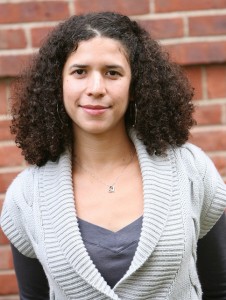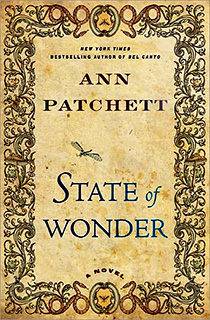Posted on behalf of Kamara Mion, Library Research Department Intern
Behind every great lecture and every written work are countless hours of researching and planning that often begin in the library. In this column, we look at how a particular member of the Vassar faculty uses the library and its resources for their work.
Professor Eve Dunbar specializes African American literature and cultural expression, black feminism, and theories of black diaspora. She is the author of Black Regions of the Imagination: African American Writers between the Nation and the World (2012), which explores the aesthetic and political ties that bind literary genre, American nationalism, and black cultural nationalism in the literary works of mid-20th century African American writers.
We asked Prof. Dunbar to tell us a bit more about her recent projects and how she uses the Vassar libraries…
Please, tell us about your current projects.
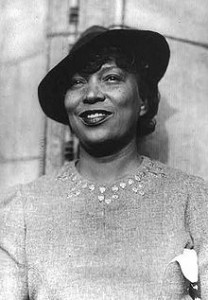
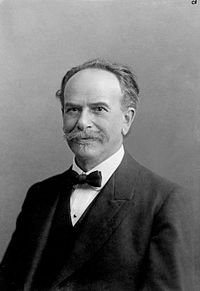 Most recently I’ve been working down in Special Collections, in rare books. I was looking for Zora Neale Hurston, an African American woman writer from the early 20th century. I was asked to contribute an essay to a volume on Franz Boas, who many consider to be the father of modern American anthropology. The volume is on Boas’ influence on the discipline and I was asked to write on the relationship between Hurston and Boas. While a student at Barnard, Hurston took many classes and studied with Boas, who was a Columbia professor.
Most recently I’ve been working down in Special Collections, in rare books. I was looking for Zora Neale Hurston, an African American woman writer from the early 20th century. I was asked to contribute an essay to a volume on Franz Boas, who many consider to be the father of modern American anthropology. The volume is on Boas’ influence on the discipline and I was asked to write on the relationship between Hurston and Boas. While a student at Barnard, Hurston took many classes and studied with Boas, who was a Columbia professor.
How did you use the Vassar Library? Were there any particular databases?
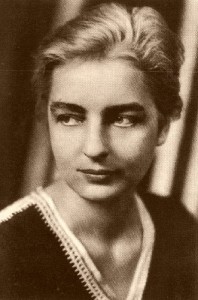 I thought that I might investigate the type of relationship between Boas and Hurston through exploring the letters of Ruth Benedict. Besides being one of the most important of female anthropologists during her period, she was a Vassar graduate. The Vassar Library has all of her papers, a lot of interesting letters. I found that by looking at these letters that I could see all three relationships, Benedict’s to Boas, Boas to Hurston, and Hurston to Benedict.
I thought that I might investigate the type of relationship between Boas and Hurston through exploring the letters of Ruth Benedict. Besides being one of the most important of female anthropologists during her period, she was a Vassar graduate. The Vassar Library has all of her papers, a lot of interesting letters. I found that by looking at these letters that I could see all three relationships, Benedict’s to Boas, Boas to Hurston, and Hurston to Benedict.
What did this research lead to?
I’m writing two essays, one very academic, the second shorter and more for a general reading audience.
Did you use other databases or libraries, and how so?
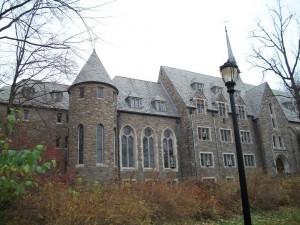 I used MLA Bibliography, and the Music Library at Skinner Hall. My research focuses on the African diaspora, and while Skinner’s books focus primarily on music, they have a lot of books that really touch more on cultural aspects, so I was able to use the Music Library for an essay that dealt with hip-hop fiction, street literature and feminism. I also used the Beinecke at Yale, and the Schomberg at NYC Public Library.*
I used MLA Bibliography, and the Music Library at Skinner Hall. My research focuses on the African diaspora, and while Skinner’s books focus primarily on music, they have a lot of books that really touch more on cultural aspects, so I was able to use the Music Library for an essay that dealt with hip-hop fiction, street literature and feminism. I also used the Beinecke at Yale, and the Schomberg at NYC Public Library.*
How do you approach a topic that requires extensive research?
I go into the archives, find a primary document that opens up the time and place and start with one article. Then I mine the article and bibliography for a set of readings that everyone who’s writing on that topic is also reading. It’s important because I need to know the shape of the discussion I’m writing against first, so that I can then make a well-informed argument. Of course, you also want to find some new and innovative information.
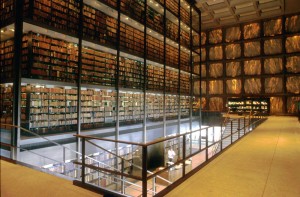 *The Beinecke is Yale’s primary Special Collections library, and its collections are primarily comprised of unpublished manuscripts and rare books.
*The Beinecke is Yale’s primary Special Collections library, and its collections are primarily comprised of unpublished manuscripts and rare books. 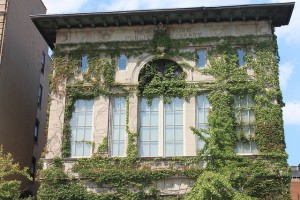 The Schomburg Center for Research in Black Culture is a special collection that is part of the New York Public Library, and is located near the 125th Street MetroNorth train station.
The Schomburg Center for Research in Black Culture is a special collection that is part of the New York Public Library, and is located near the 125th Street MetroNorth train station.

